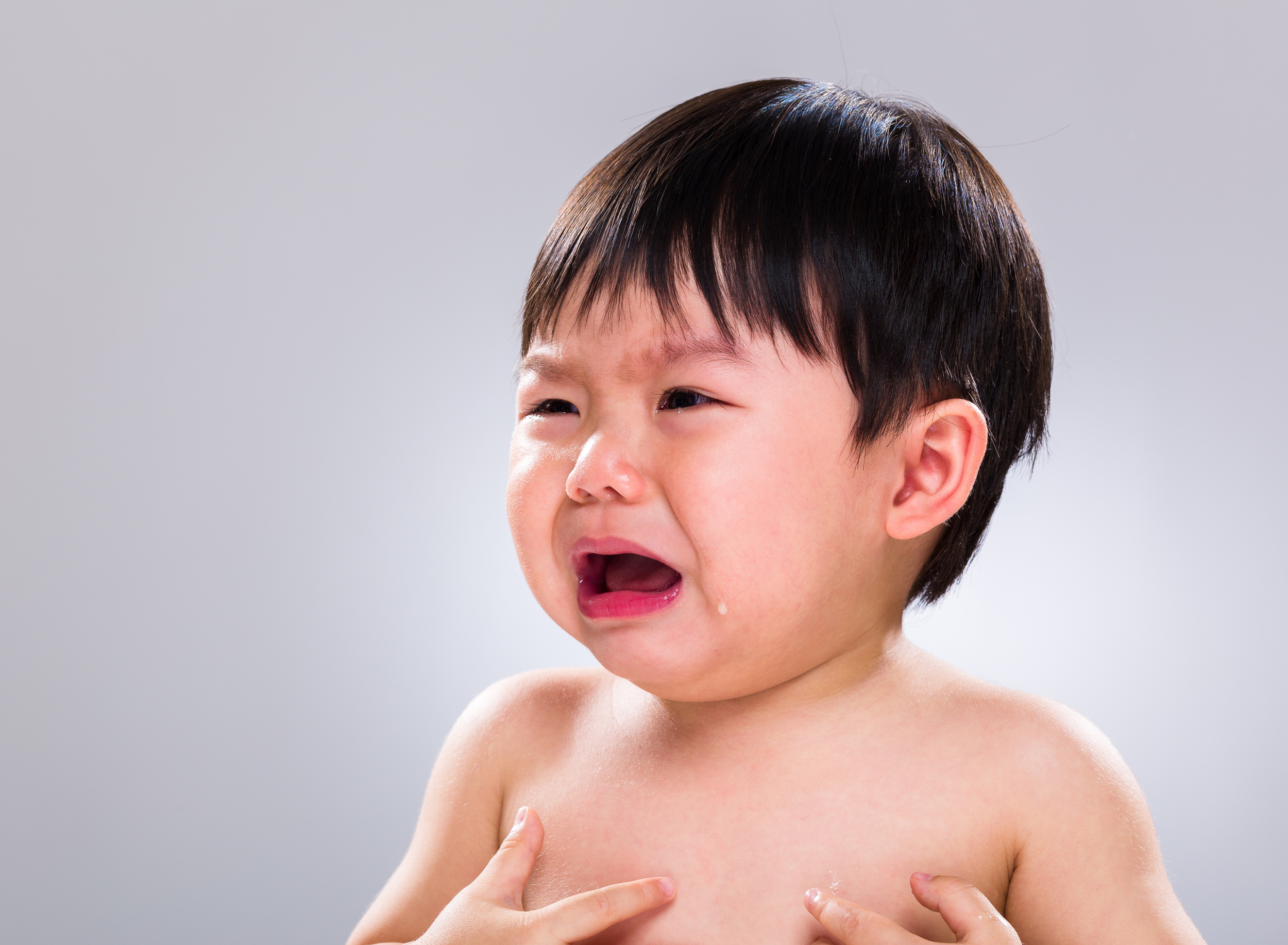Yeast & Irritation
By Brandy Kincaid, Director, Your Whole Baby of Tennessee
Yeast infections and irritation happen to girls, intersex children, and boys (both circumcised and intact). Treatment for yeast infection and irritation of the intact penis is simple, and foreskin amputation as a "solution" is unnecessary.
Yeast
When my oldest son was around five years old, he came to me one night crying and saying his penis was hurting. I asked him to show me, and was taken aback by its appearance. The glans and foreskin were swollen to about three times their normal size, it was bright red and when he pressed the side of the glans area, and a thick grayish/whitish discharge shot out. I had never seen anything like this and was deeply concerned.
Luckily, we have a wonderful family physician, and I called him immediately. He is not only intact-friendly, but also answers his cell phone after hours. After I described my son’s symptoms to him, he informed me that my son was dealing with yeast and told me not to be concerned. He gave me a few tips and called in a prescription anti-fungal just in case. Over the years, and another son and daughter later, I’ve picked up more tips and tricks in dealing with yeast.
What are Symptoms of a Yeast Overgrowth in a Boy/Male?
Swelling and redness, sometimes accompanied by discharge and/or pain/discomfort, in the absence of fever, are signs of yeast.
How do I treat a yeast infection?
Even if yeast is not the issue, treating for it just in case doesn't hurt anything. Because foreskin is natural, normal, and is not inherently dangerous to its owner, a yeast infection is usually the top suspect when redness, tenderness and/or swelling are noticed.
If you suspect that your young son has a yeast overgrowth or infection, the following tips can help:
If your child is in diapers, change them often. Yeast thrives in dark, moist places. Keeping him dry will aid healing.
If you are using cloth diapers, you will want to bleach the diapers to eliminate yeast, as it can survive on cloth. Sunning the diapers will also help eliminate any residual yeast in the cloth.
If your child is potty-trained, encourage him to pat dry with some tissue to prevent moisture in his underwear.
Wash any underclothes in hot water and dry them on the hot setting or put them outside to sun dry.
Apply clotrimazole/lotrimin 1% (an over-the-counter anti-fungal available at pharmacies, super stores, and even the dollar store!) topically to speed healing time. If you feel something stronger is warranted, a doctor can prescribe Nystatin cream.
Angela, BSN RN CLC, nurse admin for Your Whole Baby advises: apply anti-fungal cream every 2 - 3 hours for 72 hours or until external symptoms disappear. Continue applying 2 - 3 times a day for another 72 hours after symptoms clear.
Do not apply cornstarch or breast milk topically to the genitals because both feed yeast.
Try a soak in a bath with 1/4-1/2 cup of Apple Cider Vinegar. Apple Cider Vinegar is a natural anti-fungal and will help eliminate the yeast.
Mix Apple Cider Vinegar with equal parts water and wipe directly on the penis. It will be soothing and will help to eliminate yeast.
Another topical option is to break open a probiotic capsule, mix a tablespoon of coconut oil with the probiotic powder, and apply it directly to the foreskin and around the opening of foreskin. Never retract to apply topical creams; apply them on the outside of the foreskin only.
Eliminate or greatly reduce sugar and dairy from the diet as both feed yeast.
Bubble baths, chlorine pools, and laundry detergents can all create a yeast imbalance (for girls, intersex children, and boys, circumcised or intact). Some people are more prone to imbalances and if your child is extra sensitive to any of these things, you will need to discontinue or greatly reduce their use.
Begin oral probiotics immediately to re-balance the gut flora. If your child is too young to take a supplement, you can buy infant probiotics that can be added to a bottle or sprinkled on your nipple before latching to nurse.
Note: If you have treated for yeast for 48 hours and there is no improvement, there may be a bacterial infection in addition to yeast and an intact-friendly doctor may need to prescribe an antibiotic. This is rare, but does occasionally happen. Antibiotics themselves often cause yeast by killing the good bacteria in the gut along with the bad, thus causing yeast to flourish. If your child (or you) are ever prescribed an antibiotic, it's always good to take an oral probiotic (two hours minimum apart from the antibiotic), and watch for signs of yeast overgrowth.
While I am fortunate to have a wonderful intact-friendly family physician whom I trust implicitly, I understand this is not common. Unfortunately, too many well-intentioned parents panic and take their intact son to an ER when he is presenting with the symptoms that my son had. If a doctor does not understand the normal intact penis, they are very likely to recommend procedures which cause further harm. My goal is to empower other parents who might see the symptoms I saw, and not have the wonderful resource I have of a physician who is truly educated on proper intact care.
I have known parents who have taken their sons in for an obvious case of yeast infection and instead of a simple diagnosis, the doctor forcefully retracted their son and wrongly informed them that their infant son had phimosis.
I’ve also heard the common and inevitable comment of, “If he’s intact, we must check for a UTI.” UTIs are very rare in infants/boys. If presented with symptoms as I’ve described, in the absence of fever, I would always ask for a yeast swab on the outside tip of the foreskin before having a urine analysis (and I would ask for a catch bag before consenting to a catheter which is invasive, painful, and can cause scarring).
What is yeast?
Yeast (candida) is common in every human. It is located in our gut and is kept in balance by the good bacteria in our bodies. When that bacteria balance is thrown off, candida grows and the yeast moves along the intestinal tract and expands. It can cause thrush (white itchy and painful patches in the mouth that are common in infants), and yeast infections of the vagina or penis. These yeast infections are very common in women and men, and they are easily treated with anti-fungal creams and/or oral medications and natural methods.
Outside sources can also interfere with the Ph balance in the vagina and penis causing yeast overgrowth to those areas. Sitting in soapy water or bubble baths, douching, or anything that disrupts the natural balance can encourage yeast to flourish.
How can I prevent a yeast overgrowth?
A healthy diet low in sugars, grains, and dairy will help keep the gut flora happy and thriving. If your child is prone to yeast overgrowth, he should not soak in a soapy bath.
Antibiotics are known to kill off all the good gut bacteria along with the bad, and people often get yeast overgrowth during and/or after a round of antibiotics. If your child must be on antibiotics, and is prone to yeast, my doctor recommends beginning probiotics with the antibiotics. It is important to note that taking them too close together will reduce the efficacy of the antibiotic, so be sure to space them out by at least two hours. Please check with your doctor if your child is on antibiotics.
irritation
Redness and irritation of the genitals can happen to girls and boys.
One mom described: "My son is four years old and intact. He's had the normal redness at the tip of his foreskin a few times and a few instances of ballooning in the last two years or so, but today he was complaining about his penis hurting so I took a look and can see that his glans is obviously swollen (mostly on only one side) and he has a little bit of redness on that side of his foreskin."
She was worried and wondered if she should take her son to the doctor. Instead she decided to give it a few days and use coconut oil. Her update: "I put some coconut oil on him a few different times yesterday. By the time bedtime came around, the swelling was almost completely gone, but the redness was still there. This morning he's back to normal and no longer has discomfort."
Ammonia burns and/or blisters can happen if you are using cloth diapers. If you notice a stronger than normal odor from the diapers, and you see a persistent redness or random blisters on parts that rub against the diaper (tip of penis, etc), you might need to strip your diapers. A good stripping and sunning should take care of the build-up causing ammonia, and a lot of naked time and Calmoseptine will help his skin heal quickly.
Solutions
Calmoseptine is the "go-to" treatment for parents of intact boys. It's available upon request from any pharmacy. You don't need a prescription for it, but it is kept behind the counter. Walgreens typically has it in stock, but any pharmacy can order it. Calmoseptine is not an anti-fungal so it won't help for yeast infection, but it is good for raw places, skin irritated by diarrhea, random red spots, and irritated areas.
Coconut Oil is soothing and has anti-fungal properties. It is a good go-to for irritation and inflammation on the genitals of your daughter or son (intact or circumcised).
These suggestions are based on my personal experience, and the recommendations of our family doctor. Please refer to your intact-friendly physician for medical concerns and contact your physician immediately if your son is having trouble urinating.


